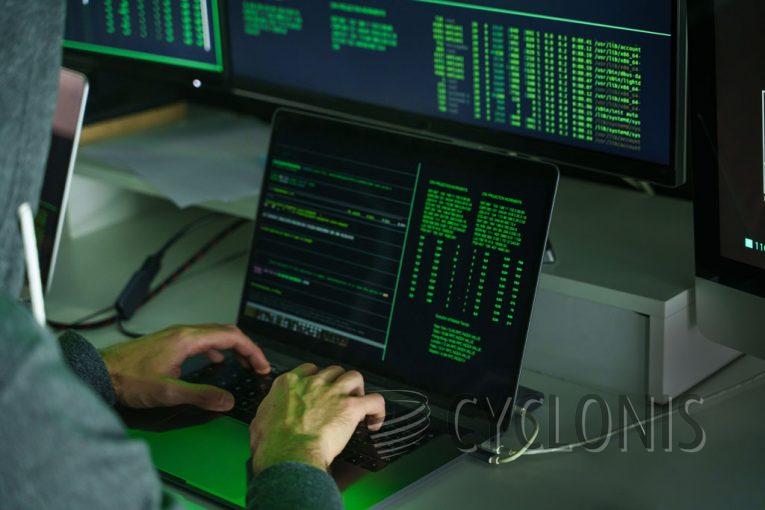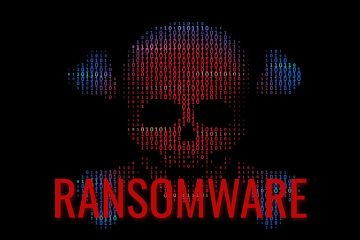Orbit Ransomware: What It Is and How to Avoid It

Table of Contents
What is Orbit Ransomware?
Orbit ransomware is a type of malicious software designed to encrypt files on a victim's computer and demand a ransom for their decryption. Orbit ransomware targets files by appending a string of random characters—likely the victim's ID—and the ".orbit" extension to the original filenames. For instance, "picture.png" becomes "picture.png.{22C68B2A-F1F0-E04A-25F3-AF21452DA46C}.orbit", and so on. Once the encryption process is complete, the ransomware generates a ransom note, typically named "README.TXT."
What Ransomware Infections Usually Want
Ransomware, including Orbit, is primarily used by cybercriminals to extort money from victims. The ransom note left by the attackers informs the victim that their files have been encrypted and can only be recovered by purchasing a decryption tool from the attackers. It provides a Tox ID for communication and even offers to decrypt one file for free as proof that they can decrypt the files.
The note also warns against renaming or editing the encrypted files, using third-party software for decryption, or contacting third parties. The attackers threaten that such actions could lead to data loss or scams. Additionally, they claim to have access to the victim's network and threaten to sell or disclose the victim's data if they do not make contact within 24 hours.
Orbit Ransomware's Note:
YOUR FILES ARE ENCRYPTED!
Your files, documents, photos, databases and other important files are encrypted.
If you found this document in a zip, do not modify the contents of that archive! Do not edit, add or remove files from it!
You are not able to decrypt it by yourself! The only method of recovering files is to purchase an unique decryptor.
Only we can give you this decryptor and only we can recover your files.To be sure we have the decryptor and it works you can send an message uTox: 4CEEB4949763512B2B6603DA8CA79291D041B2DEF5A8A39D7F491B1F84A4E85C0BEC17F728A7 and decrypt one file for free.
But this file should be of not valuable!Do you really want to restore your files?
TOX: 4CEEB4949763512B2B6603DA8CA79291D041B2DEF5A8A39D7F491B1F84A4E85C0BEC17F728A7How to use tox:
- Download a uTox client: hxxp://utox.org
- Run it
- Add our TOX id:
4CEEB4949763512B2B6603DA8CA79291D041B2DEF5A8A39D7F491B1F84A4E85C0BEC17F728A7Attention!
- Do not rename or edit encrypted files and archives containing encrypted files.
- Do not try to decrypt your data using third party software, it may cause permanent data loss.
- Decryption of your files with the help of third parties may cause increased price (they add their fee to our) or you can become a victim of a scam.
- We have been in your network for a long time. We know everything about your company most of your information has already been downloaded to our server. We recommend you to do not waste your time if you dont wont we start 2nd part.
- You have 24 hours to contact us.
- Otherwise, your data will be sold or made public.
Understanding Ransomware
Ransomware is a type of malware used by attackers to extort money from victims by encrypting their files. Cybercriminals target individuals, companies, and organizations. Important data should be backed up regularly to prevent loss due to a ransomware attack. Ransomware variants like Anonymous Encryptor, Watz, and PartiZAN32 highlight the diversity and adaptability of these threats.
How Ransomware Infects Computers
Cybercriminals use various tactics to trick users into executing ransomware on their computers. Common methods include:
- Phishing Emails: Fraudulent emails containing malicious links or attachments are a primary vector for ransomware distribution.
- Pirated Software: Ransomware is often hidden in pirated software or cracking tools.
- Malicious Ads: Online advertisements can be used to deliver ransomware.
- Exploiting Vulnerabilities: Attackers exploit vulnerabilities in outdated operating systems or software.
- Infected USB Drives: Physical devices like USB drives can be used to spread ransomware.
- Technical Support Scams: Fraudulent tech support can trick users into downloading malicious software.
- P2P Networks and Free File Hosting Sites: Ransomware can spread through peer-to-peer networks and free file hosting services.
- Compromised Websites: Visiting compromised or deceptive websites can result in ransomware infection.
How to Avoid Ransomware Infections
Avoiding ransomware infections requires a combination of good practices and preventative measures:
- Regular Backups: Regularly back up important data to a remote server or an unplugged storage device. This ensures that even if files are encrypted, a copy remains accessible.
- Email Vigilance: Be cautious with emails, especially those from unknown senders. Avoid clicking on links or downloading attachments from suspicious emails.
- Updated Software: Keep all software and operating systems up to date. Cybercriminals often exploit vulnerabilities in outdated systems to deliver ransomware.
- Use Security Software: Install and maintain reliable security software that will detect and block ransomware. Regularly update this software to make sure it can defend against the latest threats.
- Secure Networks: Ensure that your network is secure and segmented where possible to limit the spread of ransomware within the network.
Final Thoughts
Orbit ransomware, like other ransomware variants, poses a significant threat to both individuals and organizations. By understanding how ransomware operates and taking proactive steps to secure data and systems, the risk of infection can be significantly reduced. Regular backups, vigilant email practices, up-to-date software, robust security measures, and secure network configurations are essential components of a comprehensive ransomware defense strategy.








